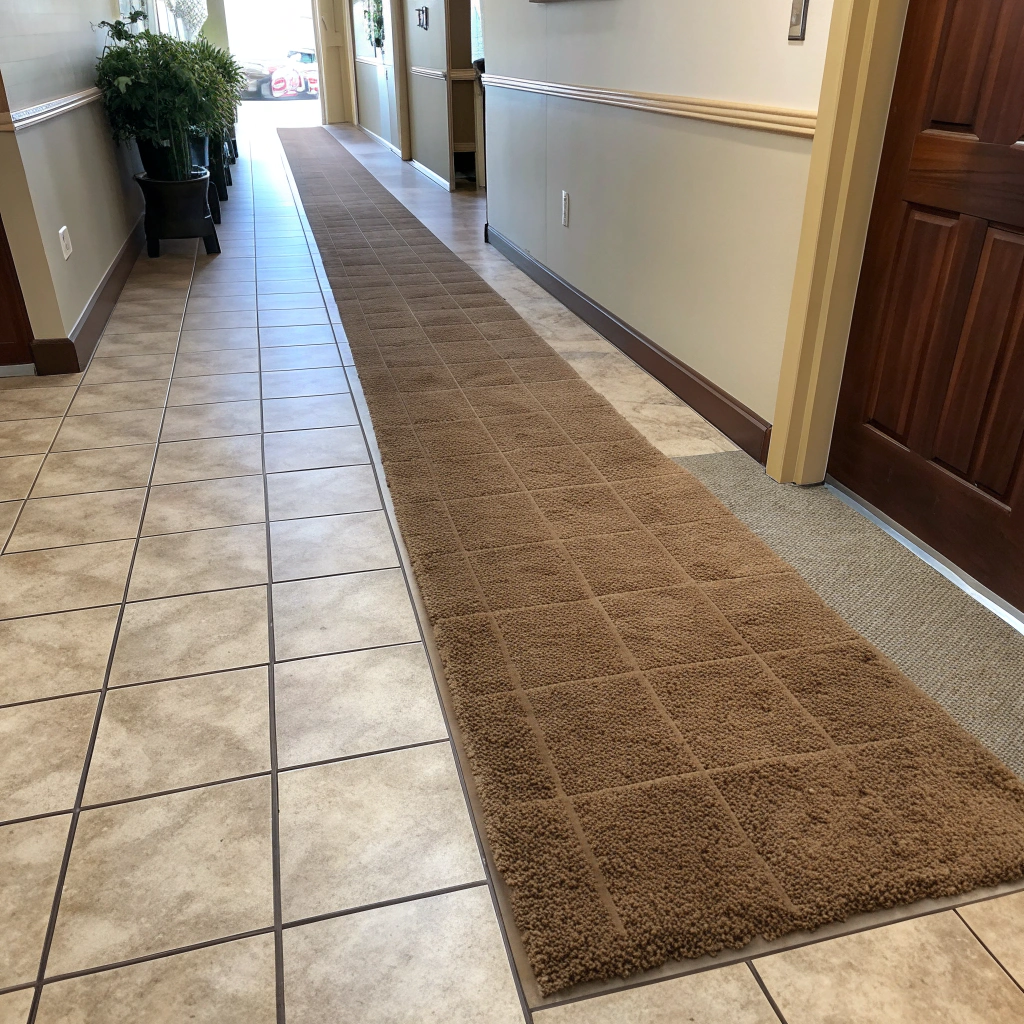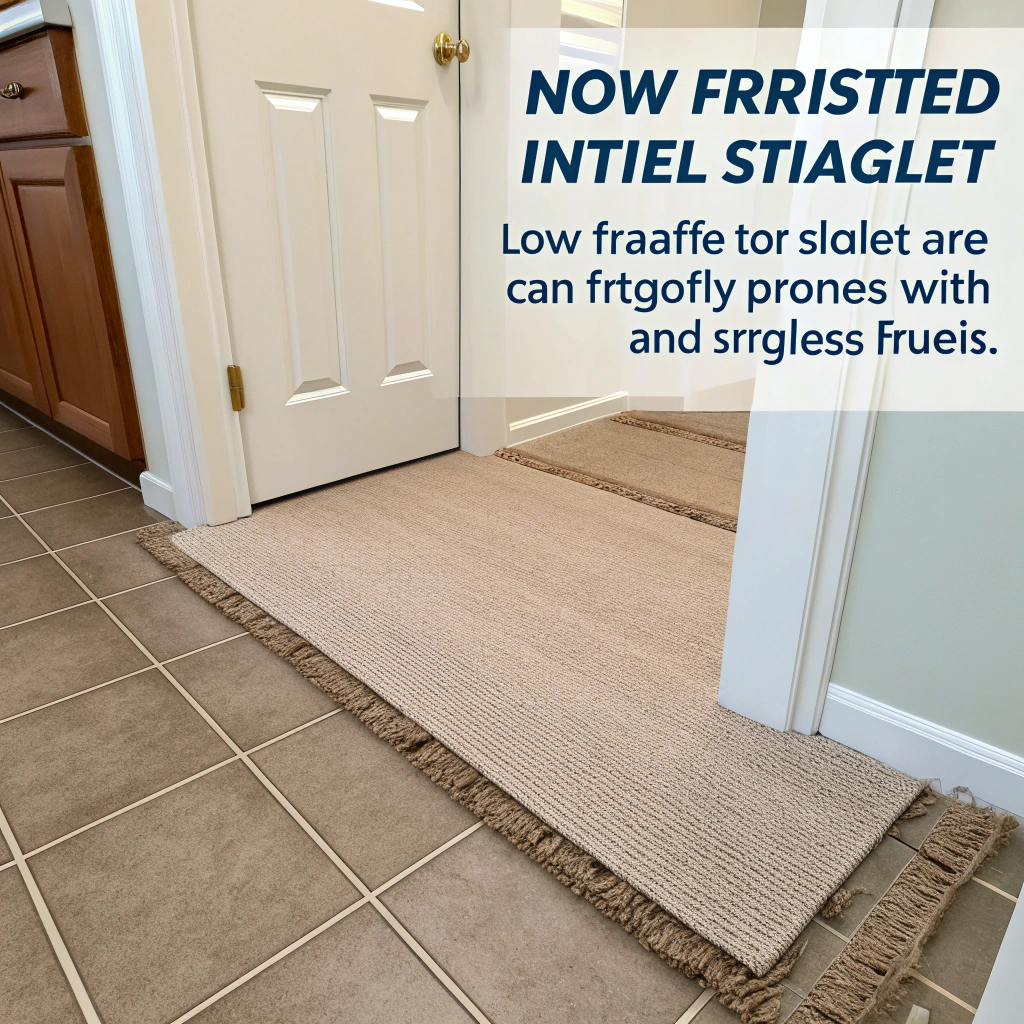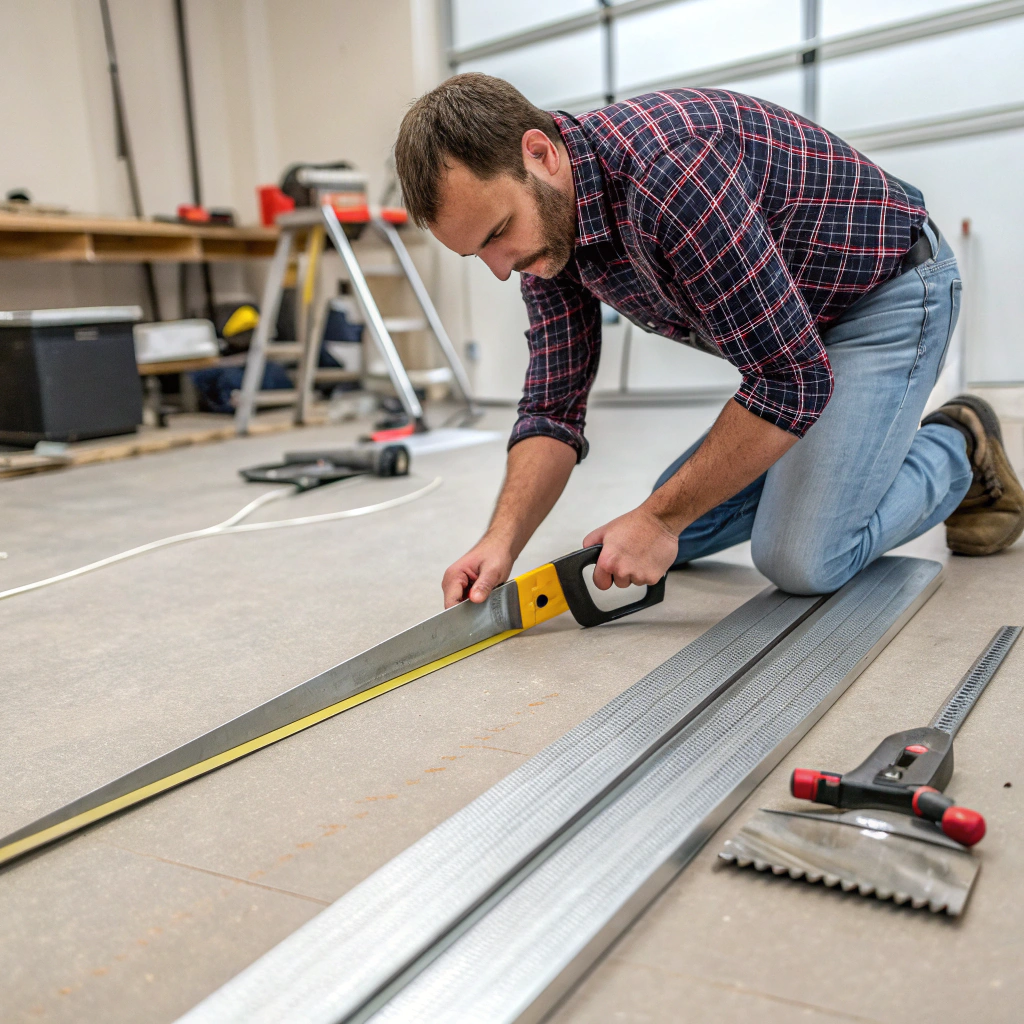カーペットとタイルの間にトランジション・ストリップは必要か?

Walking from soft carpet to hard tile shouldn’t be a trip hazard. That’s why so many floors use transition strips between materials.
Yes, a transition strip is often necessary between carpet and tile. It ensures safety, a seamless appearance, and protects the edge of both flooring materials.
Many people ignore this tiny detail until it causes snags, trips, or fraying. Let me show you why using a transition strip is the smart move.
Why Are Transition Strips Important Between Carpet and Tile?
A raw carpet edge meeting sharp tile? That’s a recipe for disaster—snags, unraveling, and even injury.
Transition strips are essential for connecting carpet to tile. They provide a smooth bridge, protect flooring edges, and prevent accidents.

Without a transition strip, the two materials are exposed where they meet. Over time, the carpet can fray or lift. The tile edge may chip. Worse, someone might trip on the uneven level.
Key Benefits of Transition Strips
- Edge Protection: Prevents carpet unraveling and tile chipping.
- Safety: Reduces trip hazards caused by height differences.
- Clean Finish: Makes the flooring look polished and complete.
- Expansion Buffer: Allows for natural movement of flooring materials.
Common Problem Scenarios
| 問題 | 結果 | Caused By |
|---|---|---|
| Frayed Carpet | Loose fibers, wear | No edge guard |
| Cracked Tile | Chips at edge | Direct contact with carpet |
| Tripping Hazard | Falls or stumbles | Uneven height |
| Visible Gaps | Dust buildup | Materials pulling apart |
Transition strips solve all of these issues in one go. Every time I install flooring, I insist on using them—even in tight budgets.
Transition strips help reduce trip hazards between carpet and tile.真
They create a smooth, level bridge between flooring types.
Transition strips are purely decorative and don’t affect floor durability.偽
They play a key structural and safety role in protecting the flooring edges.
What Types of Transition Strips Work Best for Carpet-to-Tile?
Not all transition strips are the same. The wrong one can be bulky, ugly—or worse, ineffective.
The best transition strips for carpet-to-tile include metal reducers, Z-bars, and T-moldings, depending on height and material type.

When choosing a transition strip, I always consider the height difference and traffic level. In homes with kids or wheelchairs, flush transitions work best.
Common Types of Transition Strips
| タイプ | 最適 | 説明 |
|---|---|---|
| Z-Bar | Carpet to tile at same level | Holds carpet underneath metal bar |
| Reducer Strip | 身長差 | Slopes down from tile to carpet |
| Tモールディング | Slight height difference | Fits between surfaces, good for floating floors |
| Vinyl Transition | Budget options | Flexible and easy to install |
Choosing the Right One
- Z-Bars: Offer cleanest look; requires tucking the carpet under metal.
- Reducer Strips: Ideal when tile is significantly higher than carpet.
- T-Moldings: Good for even transitions but requires groove installation.
- Vinyl Options: Great for DIY or low-traffic areas.
Personally, I prefer Z-bars in living rooms or hallways. They’re nearly invisible and very secure. For more durable needs, aluminum reducers are perfect.
Z-bar transition strips offer a clean, secure connection between carpet and tile at the same height.真
They hide the carpet edge while creating a smooth bridge.
Vinyl transition strips are the most durable for heavy foot traffic.偽
Vinyl strips are flexible and budget-friendly but wear out faster in high-traffic areas.
When Can You Skip the Transition Strip—or Is It Always Necessary?
Some people ask if they can skip the strip. The answer depends on the project and long-term expectations.
You can skip a transition strip only when carpet and tile are perfectly level, tightly installed, and used in low-traffic areas—but it’s rarely advised.

In theory, a flush install can work without a strip. But I’ve seen too many repairs caused by skipping them. Most problems show up months later, not immediately.
When It’s Okay to Skip
- Perfectly Level Install: Carpet and tile align without lip.
- Tight Tuck Method: Carpet stretched and secured tightly under tile.
- Low Traffic: Closet interiors or guest rooms.
Risks of Skipping
- Carpet Frays: Exposed edge breaks down over time.
- Tile Damage: Bare edge chips with impact.
- Trip Risk: Small gaps widen and become dangerous.
- Code Violations: Some building codes require transition strips.
I once worked on a rental unit where the owner skipped all transitions. Within six months, tenants complained about tripping. We had to redo the entire flooring junctions.
Better Safe Than Sorry
Even if a strip isn’t legally required, I always recommend one. For just a few dollars, it saves costly repairs and injuries.
You can skip the transition strip if both surfaces are at the same level and securely installed.真
Under perfect conditions, it's possible—but still risky.
Skipping the transition strip is always safe as long as you like the look.偽
Aesthetic preference doesn't outweigh the risk of wear and injury.
How Do You Install a Transition Strip Correctly?
Installing a strip wrong can make it worse than not having one. It needs to sit tight and flush—no gaps, no movement.
To install a transition strip, measure the gap, cut to length, secure with screws or adhesive, and ensure both flooring types are tightly anchored beneath it.

ステップバイステップ・インストール・ガイド
- Measure the Gap: Use a tape measure to get accurate width.
- Cut the Strip: Use a hacksaw for metal strips or utility knife for vinyl.
- Align the Strip: Place it so it covers both flooring edges evenly.
- Secure the Strip:
- Screws or Nails: For wood or concrete subfloors.
- Adhesive: For floating floors or when drilling isn’t possible.
- Press Down Firmly: Make sure it’s level and doesn’t shift.
- Test the Fit: Walk over it gently to check for movement.
Tools You May Need
| 工具 | 目的 |
|---|---|
| テープメジャー | Accurate fit |
| Hacksaw | Cut metal strips |
| Utility Knife | Trim vinyl strips |
| ドリル | Anchor into subfloor |
| Construction Adhesive | Secure strip without screws |
プロのアドバイス
- If using a reducer strip, slope should always face the carpet side.
- Always use proper anchors for concrete subfloors.
- Vacuum and clean both floor edges before placing the strip.
Correct installation ensures the strip stays in place for years, without squeaks or movement.
Transition strips should be secured with screws or strong adhesive to prevent movement.真
A loose strip can cause trips or let flooring edges shift.
Transition strips can be installed loosely so they can be adjusted later.偽
They must be firmly fixed to ensure safety and durability.
結論
Transition strips might seem minor, but they’re crucial for safety, durability, and a clean floor finish. Whether you’re renovating or building new, don’t overlook this important detail.



